Founded in 1995, Dared, based in Hong-Kong, focus purely on the high quality valve amplifier market, including Hi-Fi and guitar amps as well as multimedia speakers.
In the valve amp Hi-Fi arena, Dared offer a range of models at different prices to meet the needs of audiophiles around the world.
There?s the "Reference Series" with a pre-amplifier and two mono amplifiers, the "Wooden Series" made up of a headphone amp and a source signal optimizer (all fixed inside a wooden box), the "Retro Series" line which is currently composed of one very retro-looking radio, the "Mini Hi-End Series" which contains five products, one of which is the DAC MP-5BT we?re looking at today, and finally, the "Planet Series" which is (for now) made up of the Saturn integrated amplifier which operates in Class A.
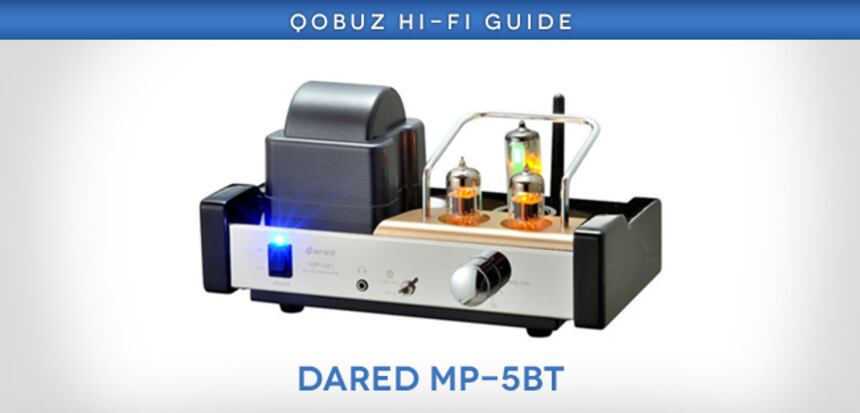
Dared explain on their website that all the amps coming off their production lines go through advanced testing and that each amplifier is also "aged" for a number of hours (a process called ?smoke testing? in the industry, designed to identify any weak links in the component chain) and is then listened to before being packaged.

Presentation
The Dared MP-5BT looks like a lot of valve amplifiers in that the glass vaccum tube section is on the exterior. It?s covered with a metal casing featuring thin air vents which help cool the tubes, as well as keeping any stray hands or fingers away from their hot surface. Another cover over the transformer takes up the rest of the space.
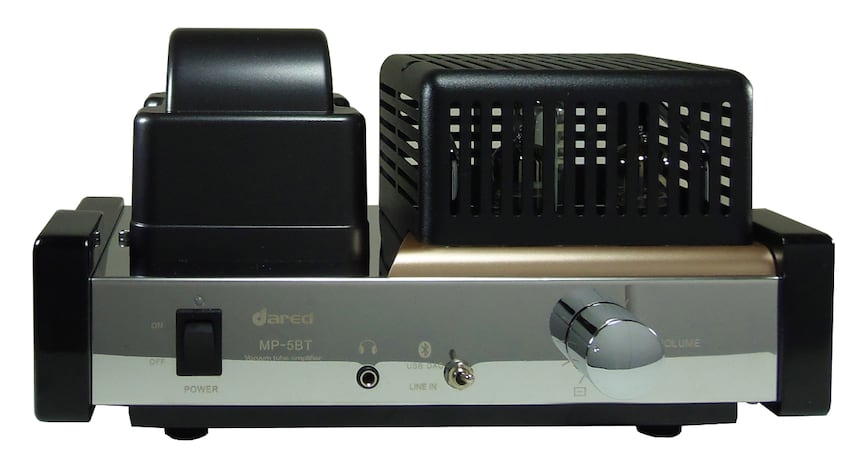
The handsome chassis at the bottom is made out of polished stainless steel and flanked with two 20mm thick side plates with a lacquered black piano finish, which adds a final touch of luxury to the unit.
There?s no risk of getting confused with the controls since there?s just an on-off switch, an input switch (to choose between USB, Bluetooth and analogue options), a chrome volume button, and a standard 3.5mm headphone jack.
The rear of the unit features an analogue input and a pre-amp output, both on gold RCA jacks, the Bluetooth antenna, a USB B input to connect a computer, two pairs of speaker terminals (which take banana plugs or wires but which are a bit close together, which isn?t great if you?ve got big fingers), a 110/220V voltage selector and the mains input with its own fuse (nice and safe).
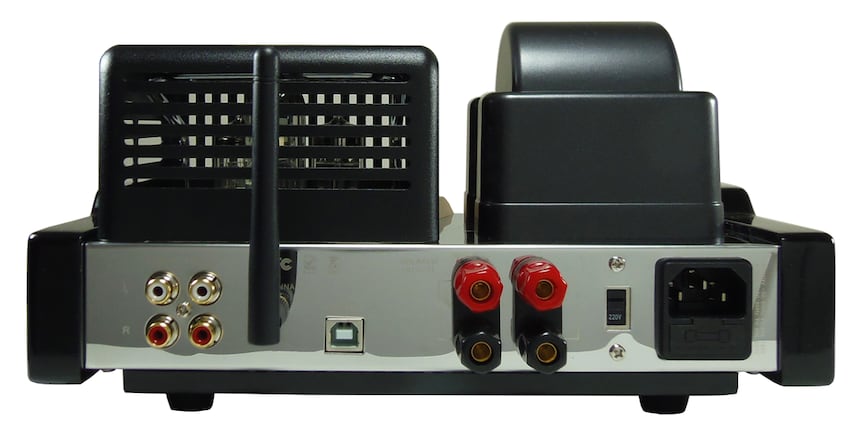
Build
There are no old fashioned techniques when it comes to the wireless bits of the Dared MP-5BT (impossible with the number of integrated circuits used, even more with the CMS). It?s just a modern manufacturing job with components mounted on a printed circuit board.
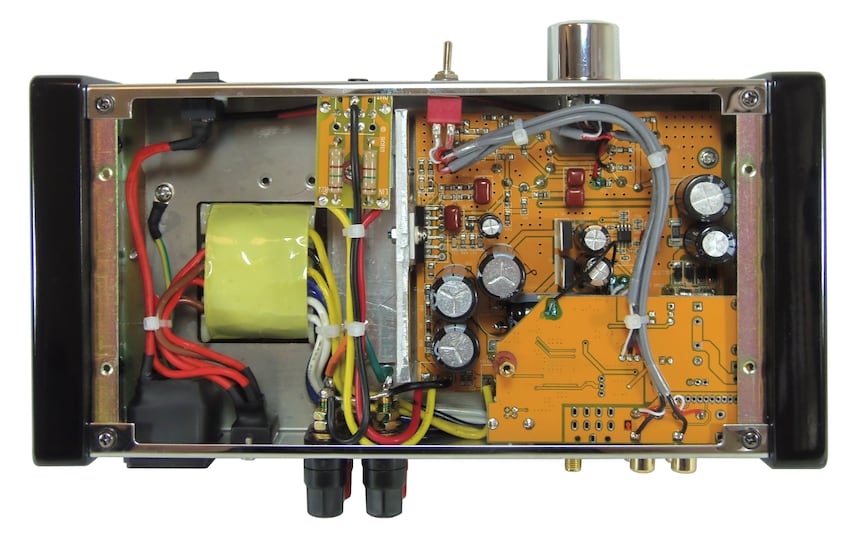
There are three circuits inside the MP-5BT. The largest deals with the amplification, with the valves creating the pre-amplification (most of which is outside of the case to help them stay cool), and also the power, apart from the transformer, which is mostly outside of the casing.
The headphone output uses the signals destined for the speakers with resistors (at the top of the photo, next to the transformer) used to drop the voltage and current to levels suitable for earphones, while another board mounted above the main circuit is for the RCA outputs and the USB and Bluetooth digital outputs.
USB and BlueTooth board
This board, linked to the main board by a number of wires, holds the RCA analogue inputs and the pre-amp output, as well as the USB connection. The signals for the USB are taken care of by the aptX Bluetooth receiver (the small blue part to the left above the USB input) made by CSR, the British company, which created aptX.
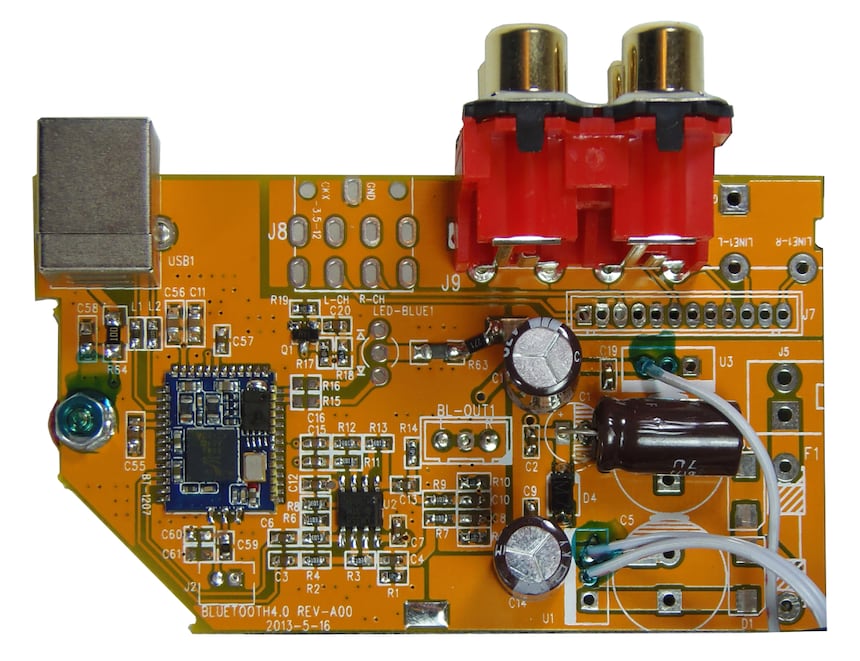
This limits the conversion to 16 bits to 44.1 kHz, files, even files in HD will be played in "Direct Sound" (DS) at 16 bits to 44.1 kHz by software players or aptX Bluetooth. The CSR chip takes care of the switching between the Bluetooth signals and those coming from the USB.
The signals come out of the CSR unit symmetrically (to make them less susceptible to noise and interference) and are then processed by an LM358 Op-Amp Differential Amplifier to get rid of any pollution and are then sent to the on the front (marked as BL-OUT1).
Power and Amplification
There are also four 4700?F/25V capacitors for filtering the power to components other than the valves. The much higher power required for the tubes is filtered by a 47?F/250V capacitor and a second 100?F/200V capacitor.
The capacitors might look a little underpowered for the job, but you must remember that the amount of current stored by a capacitor is equal to the product of its value multiplied by the voltage at its terminals, which is written Q=C.U. This means that a 100?F/200V capacitor can hold the same amount of current as a 1000?F/20V capacitor, since their capacitance multiplied by voltage is the same, namely 100.10-6 x 200 = 1000.10-6 x 20 = 20.10-3 Coulombs.
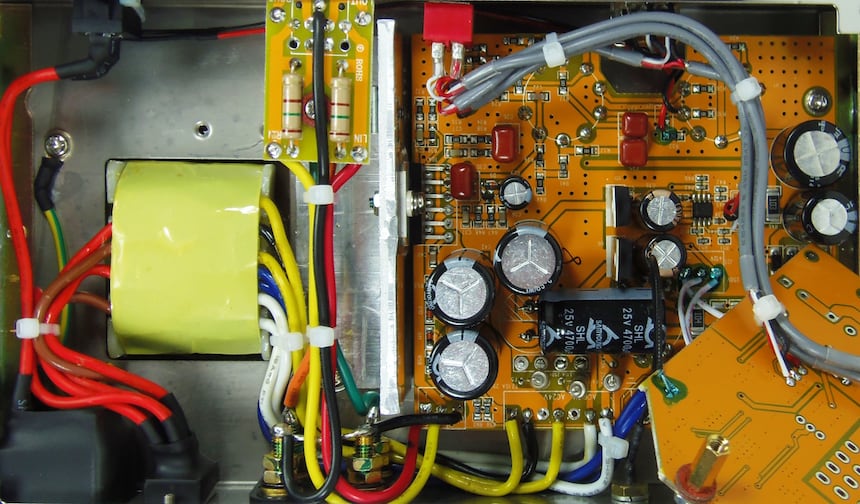
The signals coming from the front switch, whether they come from the USB or Bluetooth inputs, or from the analogue line-in, go via the volume control and gain 6 dB (x2) from a low-noise Texas Instruments TL072 operational amplifier. This is powered with + or - 5V by LM7805 and LM7905 regulators filtered by 2200?F/16V capacitors.
The follow valve stages use 6N1-M and 6N2 model valves (the two valves on the front). The third valve is a 6E2 (EM87) model called "cat-eyes" or "Magic-Eyes" which the importer, Hifiatubes, describes as:
The green-eyed valve! It lights up green and comes alive with the dynamics of the music. It?s beautiful to watch. It?s like a brand new invention, except that our parents remember it from their radios fifty years ago! It?s the golden oldie, which makes all the other valves look past it. But in fact it?s the same radio tube our grandparents used!
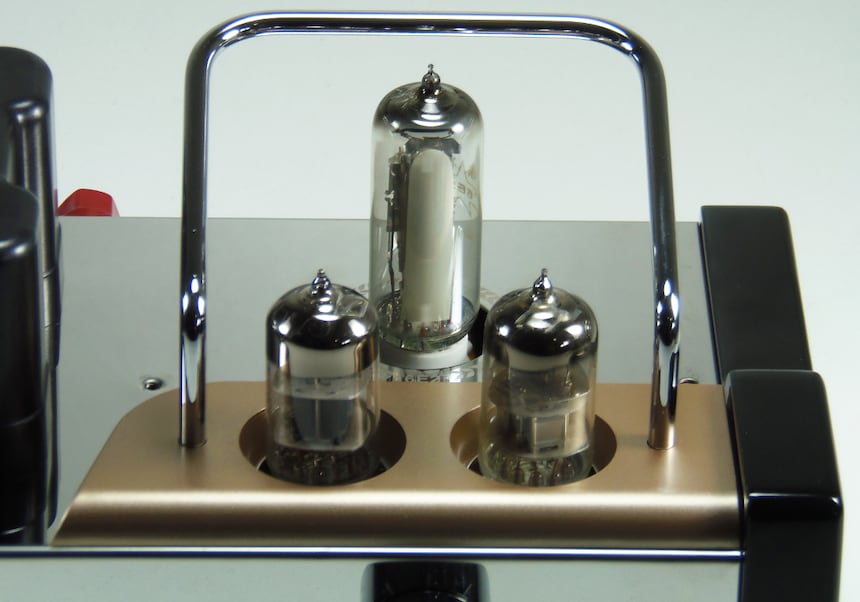
Next is the power amplifier, an STMicroelectronics TDA7265 unit able to deliver a maximum of 2 x 25W into 8?. It?s presented in the form of an integrated circuit in a "Multiwatt" casing mounted on an aluminium bracket which is fixed to the chassis to give it a large cooling surface.
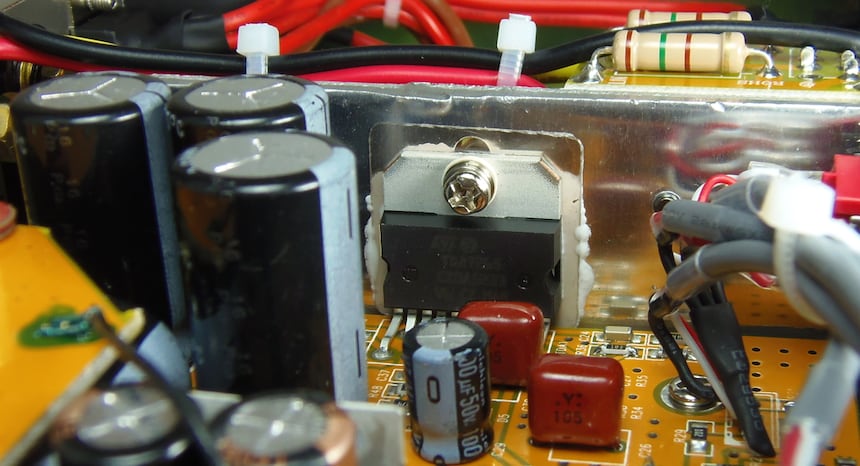
General Usage and Listening
The MP-5BT installs itself automatically on your computer when you plug it in via USB, and, as stated earlier, works purely in Direct Sound with 16 bits to 44,1 kHz.
You?ll have to add it to your Bluetooth devices to be able to use the wireless connection which transmits in aptX, essentially near CD-quality.
For the sound quality results, one thing is indeed clear, this amp really deserved a better quality UBS input. For proof we listened to the Allegro of Dvorak?s Suite Américaine by the Budapest Festival Orchestra, conducted by Ivan Fischer in the Studio Masters 24 bits à 192 kHz version using Foobar2000 software.
First try was with the MP-5BT?s USB input. Hardcore audiophiles (this unit isn?t really for them) don?t want to hear the words ?Direct Sound?. With Direct Sound the signals received by the software are processed by Windows in way that negatively affects the sound quality.
Despite the lack of choice in the matter, the sound results are certainly far from catastrophic, but when you look at the innards of the MP-5BT, we were a little surprised by the slightly gluey timbres and the restrained dynamic via USB.
If we?d stopped there, we would have said it wasn?t that bad, but that the sound results don?t match the expected levels of the amplification.
But we changed tack, using a USB DAC "no name made in China", with an XMOS processor, a PCM5102 DAC without post-filtering, a set-up similar to the Explorer DAC by Meridian, and we input an analogue signal via the RCA, playing back music with Foobar2000 on Kernel Streaming (KS) mode at 24 bits to 192 kHz.
And it was a different story! Our Dvorak Allegro found all its tone, showing off its colors and explosive dynamic passages which all went happily through the MP-5BT?s electronics (we even had to lower the volume this time around). The timbres found their original flavor, the highs were well crafted, the bass, while not super deep, was firm and solid. Overall the playback benefitted from a good sound balance and from a hint of sweetness in the quiet passages.
The same piece, listened to via aptX Bluetooth, while not as good as on the optical input, but was still vivacious, faithful to the timbres and significantly dynamic.
We got the same experiece with the Studio Masters 24 bits to 96 kHz version of the famous Hotel California by The Eagles.
Via USB, the sound was satisfactory by lacked a bit of pep, and the singer?s voice was slightly dull. Meanwhile, listening via the line-in and the DAC, the voice and the instrument were extremely convincing, enough to completely forget the MP-5BT?s integrated USB input.
Via Bluetooth, the results were better than the USB, with a wider dynamic, more breathability to the sound and a more vibrant guitar sound.
The conclusions practically write themselves. Forget the Dared MP-5BT?s USB input, which is not at the same level as the rest of the device. Using aptX Bluetooth, things are better and the device can be used with an aptX-enabled smartphone to listen to CD quality music wirelessly. However it?s clear that the MP-5BT only shows off its best qualities with a source or a DAC providing a good quality analogue signal.
Hifiatubes Website (importateur)
The DAC only works with Direct Sound, so there?s no sound quality table.
If you are a manufacturer, importer, distributor or other player in the area of quality sound and you?d like to get in touch with us feel free to send us an email at: newstech@qobuz.com
Author: Philippe Dassin
Translator: Jethro Turner
Original Link: https://www.qobuz.com/info/Hi-Fi/Bancs-d-essai/Dared-MP-5BT-un-sympathique-petit175025